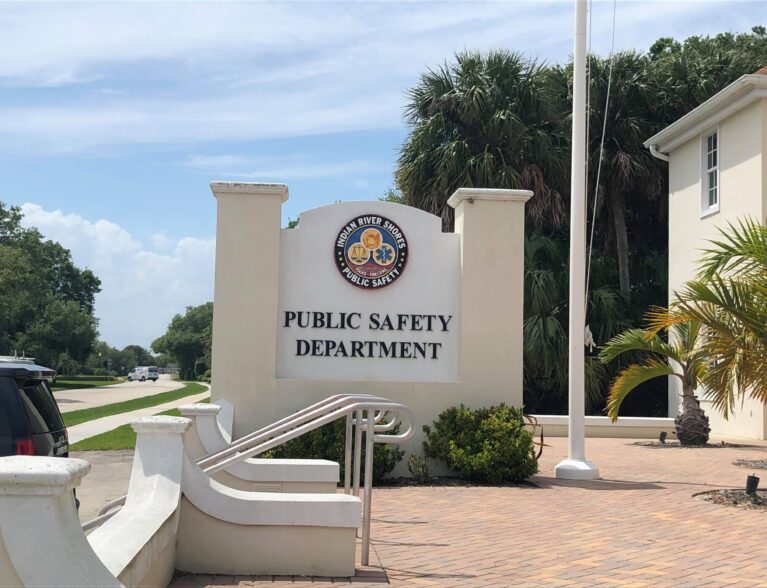
The Town of Indian River Shores Public Safety Department plans to spend $75,000 over the next five years on a body camera system to be worn by its officers starting in January.
The Shores’ draft policy document, which may be updated as questions arise during training, states that the cameras are to be turned off in areas where a person has “a reasonable expectation of privacy” including inside a residence – unless a crime has been committed – and that people interacting with an officer can request that the camera be turned off. Officers will not wear cameras on medical calls, on fire calls, or during casual contact with residents.
“They would only wear the body cameras when assigned to road patrol,” said Deputy Chief Mark Shaw. If an officer works a few hours on road patrol and then goes on-duty in the fire station as a paramedic for the rest of his or her shift, at that time the camera would be taken off.
“Medical calls would be exempt, meaning they would not be recorded,” Shaw said, and if an officer inadvertently captured images of someone receiving medical treatment at an emergency scene, those images would be protected by HIPPA and exempt from disclosure as a public record.
7Funding for the batch of 19 body cameras was in last year’s budget but the money was rolled over to this year as the cameras were not purchased.
Through a lease arrangement with the Axon company, the cameras will be replaced individually under warranty if something goes wrong, then all the cameras will be replaced with a newer version every 2.5 years. The system features cloud storage and real-time GPS monitoring so public safety supervisors know where officers are while on duty.
Town Manager Jim Harpring said the effort to introduce police body cameras in Indian River Shores has been going on since before he joined the town, as different brands and models of camera systems were evaluated before the cameras ended up in the 2021-22 town budget.
“Body-worn cameras in law enforcement have become standard operating equipment in many jurisdictions. This technology is a natural extension of in-car cameras and serves to protect the public and law enforcement officers by documenting citizen interactions,” Harpring said. “The policy and law surrounding body worn cameras will ensure their use in the field is consistent with the law and cognizant of privacy concerns.”
“We are finalizing the operational, retention and release policy. It will be consistent with s. 943.1718, F.S. as to the training and use of body worn cameras, and the provisions of Ch. 119, F.S. as it relates to the exempt and confidential nature of certain recordings that may be sought for public release,” Harpring said.
When asked if there would be different rules for use of the cameras on public property such as Highway A1A and town rights of way, and private property such as within the gates of a private club, Harpring said as long as public safety officers have a reason to be on private property in their role as a law enforcement officer, use of the body camera within the department’s guidelines, would be appropriate – just like dash cams record when officers respond to a call.
The Sheriff’s Office did not have body cameras when Harpring served as general counsel and then undersheriff, but Harpring said he’s done significant research into their use due to his involvement in the Marjory Stoneman Douglas Public Safety Commission as the commission looked closely at the appropriate use of body cameras by School Resource Officers in school settings.
The Vero Beach Police Department is also in the process of launching its own body camera program with training of officers on the technology and the rules and cameras expected to be deployed department-wide in early 2022.
In addition to the body cameras, the Shores is converting to a new plate-reading system. On Thursday’s agenda was a request to purchase six mobile license plate reader cameras that can be used in patrol cars to replace the existing L3 plate-reader system which has been less than reliable and is lacking software support.



